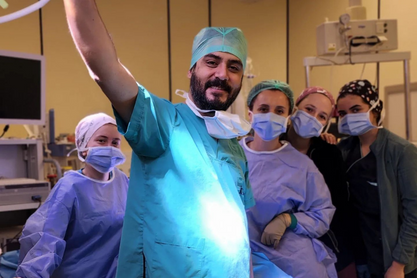- Email: info@befitistanbul.com
- Free Call: +90 (505) 087 26 78
- Whatsapp: +90 542 109 26 87
Rhinoplasty

Reshaping Perceptions: The Rhinoplasty Journey
Introduction: Exploring the Art of Rhinoplasty
Rhinoplasty, commonly known as a nose job, stands as one of the most intricate and transformative procedures in cosmetic surgery. This guide aims to provide a comprehensive overview of rhinoplasty, delving into its nuances and potential to redefine not just a facial feature, but also one's self-image and confidence.


The Essence of Rhinoplasty: A Delicate Balancing Act
Crafting Aesthetic Harmony
Rhinoplasty is a surgical procedure designed to reshape the nose, bringing it into harmonious balance with the rest of the face. It can alter the size, shape, and proportion of the nose, addressing issues like bumps, asymmetry, and deviated septums. The procedure is as much an art form as it is a medical intervention, requiring a delicate balance between aesthetic goals and preserving or enhancing nasal functionality.
A Tailored Approach for Individual Needs
Each rhinoplasty procedure is uniquely tailored to the patient's facial structure, skin type, and aesthetic goals. The surgeon considers various factors, such as the patient's ethnic background and the natural contours of their face, to achieve a result that enhances overall facial harmony while respecting individual identity.
Ideal Candidates: Who is Right for Rhinoplasty?
Seeking Symmetry and Function: Ideal candidates for rhinoplasty are individuals looking to improve the appearance of their nose or correct functional issues. This procedure is suitable for those who feel their nose is not proportionate to their face, whether it's too large, too small, or misaligned due to congenital issues or injury.
A Mindset for Change: Candidates should be in good overall health, have completed facial growth (typically 16 years or older), and have realistic expectations about the outcome. It's important for candidates to understand that rhinoplasty is about improvement, not perfection.
The Benefits: More Than Just Cosmetic
A Boost in Confidence and Self-Esteem
The most immediate benefit of rhinoplasty is the enhanced self-confidence that comes from a more balanced and pleasing appearance. Many patients experience a significant boost in self-esteem and social confidence post-surgery.
Improved Breathing and Functionality
Beyond aesthetics, rhinoplasty can also correct structural issues that cause breathing difficulties. This functional improvement can lead to better sleep, reduced snoring, and overall improved respiratory health.
The Surgical Process: What to Expect
A Journey of Precision
Rhinoplasty is typically performed under general anesthesia and can take two to four hours, depending on the complexity. The procedure may involve reshaping the bone and cartilage under the skin, refining the tip, narrowing the nostrils, or straightening the bridge.
Navigating the Recovery Phase
Recovery varies but generally includes a period of rest, with swelling and bruising around the eyes and nose. Most patients can return to work and normal activities within a few weeks. The final shape of the nose will gradually become apparent as the swelling subsides over several months.
Conclusion: Embracing a New Outlook
Rhinoplasty is more than a physical transformation; it's a journey that reshapes perceptions and enhances confidence. With this guide, you're now equipped with a deeper understanding of rhinoplasty, empowering you to make an informed decision about this life-changing procedure.

